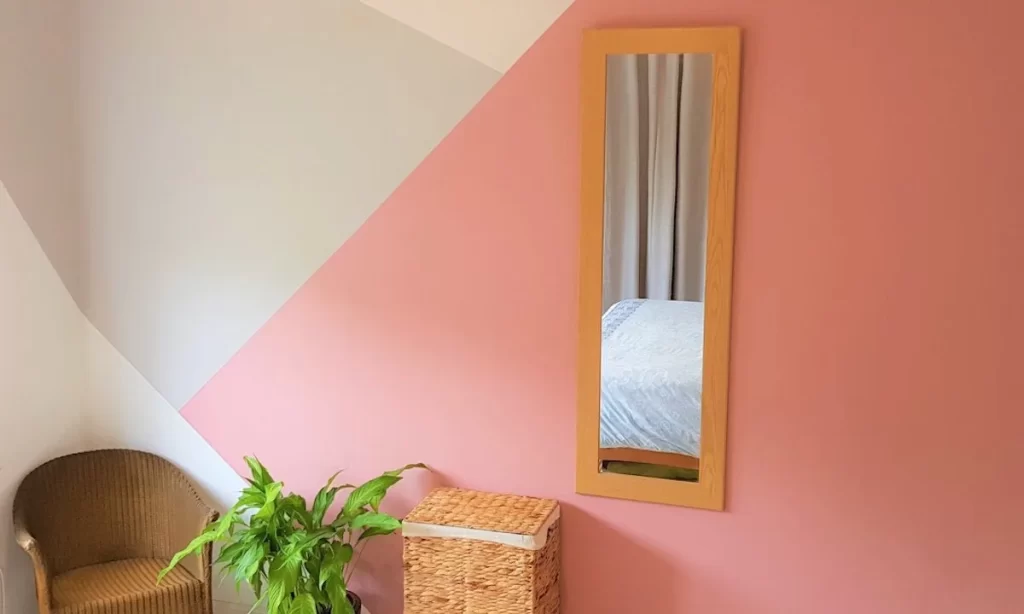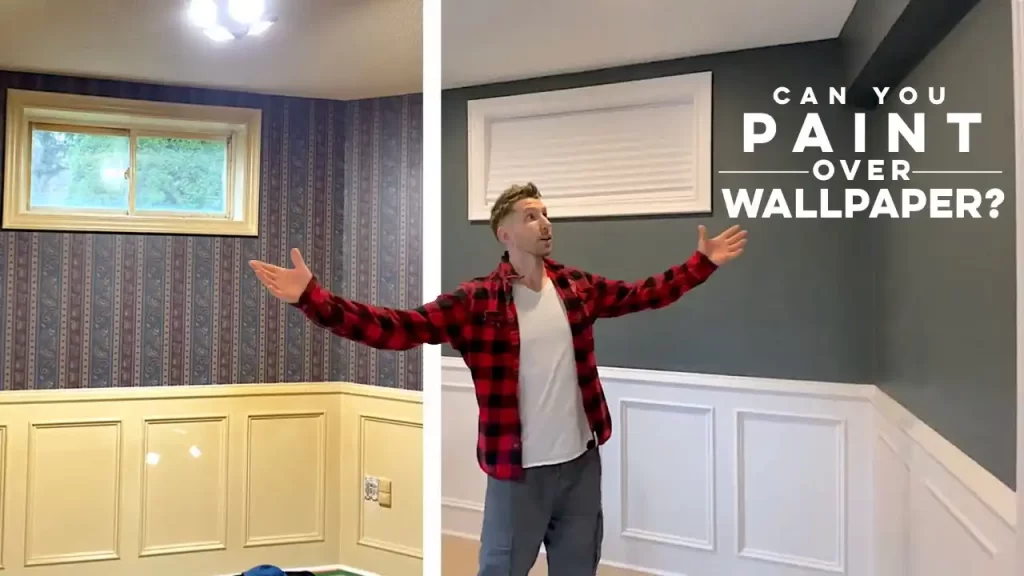When it comes to enhancing the aesthetics of a space, one of the key decisions homeowners and businesses face is whether to use paint or wallpaper. Both options offer distinct advantages and disadvantages, and understanding these can help make an informed choice. In this article, Creative Remodeling will help you explore the pros and cons of painting and wallpaper, considering their suitability for homes and businesses.
Painting a Space: The Pros
Versatility:
Painting provides an extensive range of color options, allowing individuals to achieve their desired aesthetic. With various paint finishes available, such as matte, glossy, or satin, it’s possible to create diverse atmospheres and textures within a space.
Cost-effective:
Painting is generally more budget-friendly compared to wallpapering. The upfront costs for paint and painting supplies are lower, and it’s easier to find affordable options. Additionally, painting requires minimal maintenance, reducing long-term expenses.
Easy to modify:
One of the significant advantages of paint is its ease of modification. If you wish to change the color or style of a room, all it takes is a fresh coat of paint. This flexibility makes it suitable for businesses that might need to update their branding or homes where residents seek variety.
Hides imperfections:
Paint can effectively conceal minor imperfections on walls, such as cracks or blemishes. By using textured paints or employing techniques like sponging or rag rolling, it’s possible to create visual interest and camouflage any flaws.

Painting a Space: The Cons
Labor-Intensive:
Painting can be time-consuming and physically demanding, especially for larger areas or intricate designs. Preparing surfaces, applying multiple coats, and ensuring smooth, even coverage require patience and effort. Hiring professionals may be necessary for high-quality results, adding to the overall cost.
Limited Patterns And Designs:
While paint offers a wide range of colors, it falls short when it comes to intricate patterns or designs. Achieving detailed artwork or intricate textures may require advanced skills or the assistance of professional artists, which can be costly.
Vulnerable to wear and tear:
Painted surfaces are more prone to wear and tear, especially in high-traffic areas. Scratches, scuff marks, and fading over time can necessitate repainting. Regular maintenance and touch-ups may be required to keep the space looking fresh and vibrant.
Wallpapering a Space: The Pros
Wide Range of Designs:
Wallpaper offers an extensive array of patterns, textures, and designs that can create unique visual effects and ambiance. From floral prints to geometric patterns, the options are limitless. It allows homeowners and businesses to make a bold statement or create a specific theme effortlessly.
Conceals Wall imperfections:
Unlike paint, wallpaper can effectively hide significant wall imperfections, including cracks and uneven surfaces. The textured nature of many wallpapers helps to mask these flaws, providing a smooth and polished appearance.
Durability:
Wallpaper tends to be more durable than paint. High-quality wallpapers are resistant to fading, stains, and moisture, making them suitable for areas prone to high humidity or heavy use. It can retain its appearance for many years, reducing the need for frequent replacements.
Adds depth and texture: With wallpaper, it’s possible to add depth, texture, and dimension to a room. Different types of wallpapers, such as embossed or flocked wallpapers, create a tactile experience that cannot be achieved with paint alone. This can enhance the overall visual appeal of a space.
Wallpapering a Space: The Cons
Higher cost:
Wallpaper generally comes at a higher price point compared to paint. Alongside the cost of the wallpaper rolls, installation often requires professional assistance, adding to the overall expenses.
Difficult repairs:
In the event of damage to a small portion of wallpaper, repairs can be challenging. Finding an exact match for the pattern or texture can be difficult, and patching can result in noticeable discrepancies. This can be particularly problematic if the wallpaper is discontinued or if the original installer is no longer available.
Limited application areas:
Wallpaper is not suitable for all areas of a space. It is susceptible to damage in areas prone to moisture, such as bathrooms or kitchens, where steam and humidity can cause peeling or mold growth. Similarly, wallpaper may not adhere well to textured surfaces, limiting its application in certain rooms or buildings.
Removal challenges:
When the time comes to remove wallpaper, it can be a daunting task. The process often involves extensive labor and may damage the underlying wall surface. In some cases, the adhesive used for wallpaper can leave residue, requiring additional cleaning and repairs. This makes changing or updating the look of a space more cumbersome compared to Painting And Wallpaper, where a fresh coat can be applied directly over the existing surface.
Limited lifespan:
While wallpaper is generally durable, its lifespan may be shorter compared to paint. Over time, factors such as exposure to sunlight, moisture, or high traffic can cause the wallpaper to fade, peel, or lose its adhesion. This may necessitate the complete removal and replacement of the wallpaper, adding to the overall cost and effort.
FAQS:
Which option is more cost-effective: Painting And Wallpaper?
Painting is generally considered more cost-effective compared to wallpapering. The upfront costs for paint and painting services are lower, and it’s easier to find affordable options. Wallpaper, on the other hand, often comes at a higher price point, and professional installation may be required, adding to the overall expenses.
Can wallpaper hide imperfections on walls?
Yes, one of the advantages of wallpaper is its ability to conceal minor imperfections on walls. The textured nature of many wallpapers can help mask cracks, blemishes, or uneven surfaces, providing a smooth and polished appearance.
Which option is more durable: paint or wallpaper?
Wallpaper tends to be more durable than paint. High-quality wallpapers are resistant to fading, stains, and moisture, making them suitable for areas prone to high humidity or heavy use. Painted surfaces, on the other hand, are more vulnerable to wear and tear and may require regular maintenance and touch-ups.
Can wallpaper be used in all areas of a space?
Wallpaper may not be suitable for all areas of a space. It is not recommended for areas prone to moisture, such as bathrooms or kitchens, where steam and humidity can cause peeling or mold growth. Similarly, textured surfaces may not provide a smooth and even application for wallpaper.
Does wallpaper have a limited lifespan?
While wallpaper is generally durable, its lifespan may be shorter compared to paint. Factors such as exposure to sunlight, moisture, or high traffic can cause the wallpaper to fade, peel, or lose its adhesion over time. This may necessitate the complete removal and replacement of the wallpaper.

Conclusion:
In conclusion, the decision between Painting and Wallpaper ultimately depends on the specific needs, preferences, and budget of homeowners and businesses. Both options offer distinct pros and cons that should be carefully considered.
Painting provides versatility in terms of color options, ease of modification, and the ability to hide wall imperfections. It is generally more cost-effective and requires minimal maintenance. However, it can be labor-intensive, limited in terms of intricate designs, and more vulnerable to wear and tear.
On the other hand, wallpaper offers a wide range of patterns, textures, and designs, allowing for unique visual effects and the concealment of wall imperfections. It is durable, adds depth and texture to a space, and can create a specific theme effortlessly. However, wallpapering can be more expensive, less adaptable to changing preferences, and may have limitations in application areas.
By considering factors such as cost, durability, design versatility, ease of modification, and long-term plans for the space, individuals can make an informed decision. It may be beneficial to consult with professionals or interior designers to determine the best option for achieving the desired aesthetic and functionality.
Ultimately, whether one chooses to Painting And Wallpaper, both options have the potential to transform homes and businesses into inviting and visually appealing spaces. The key is to carefully weigh the pros and cons, ensuring that the chosen option aligns with individual needs and preferences.
